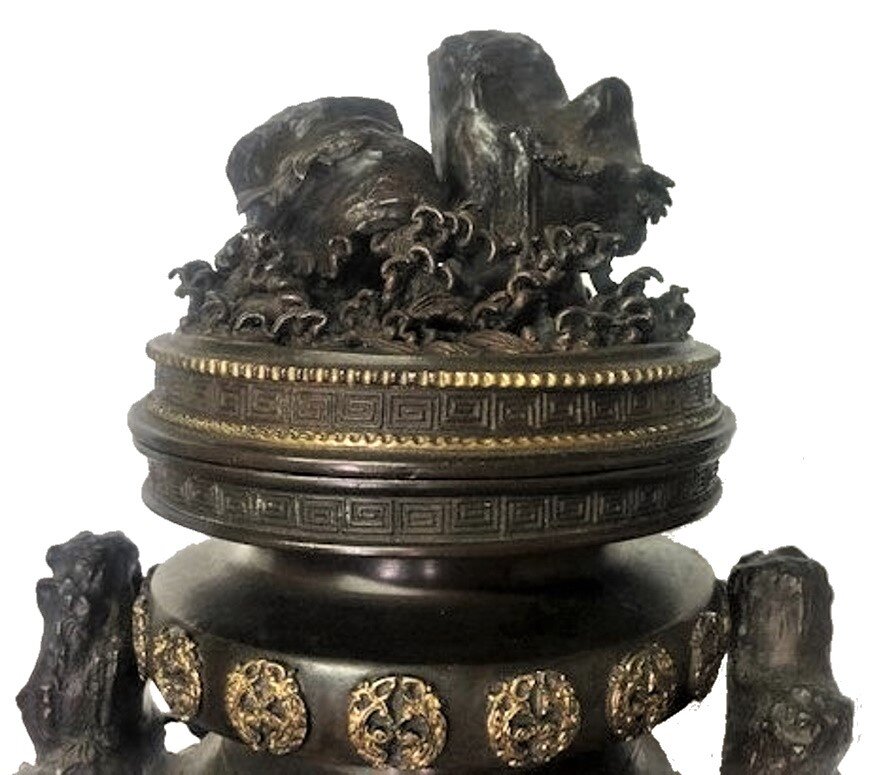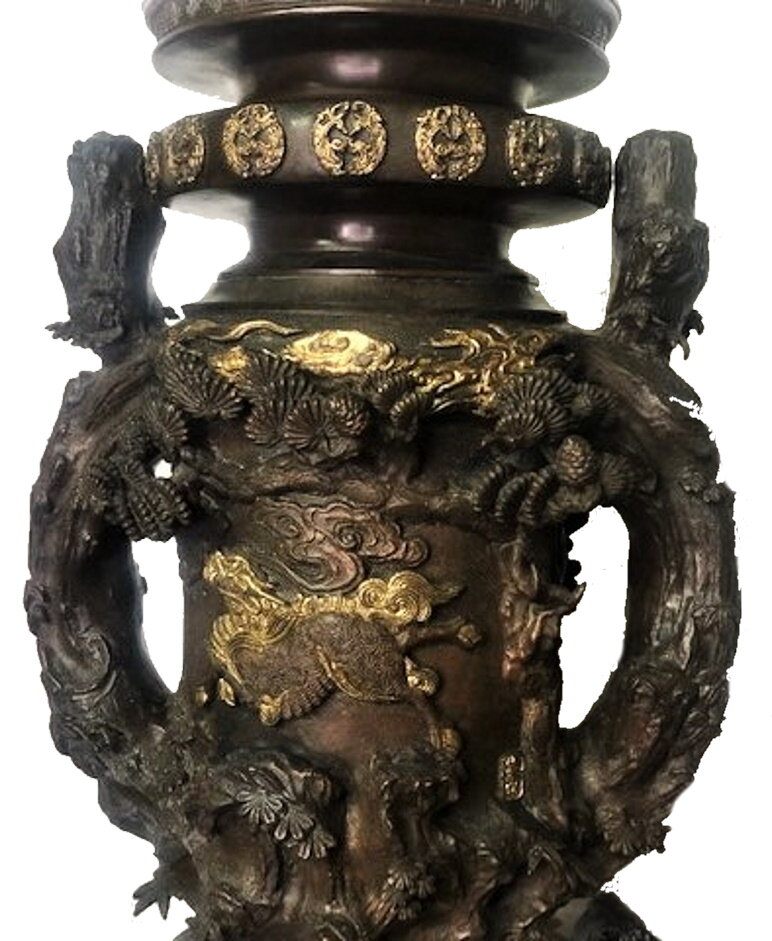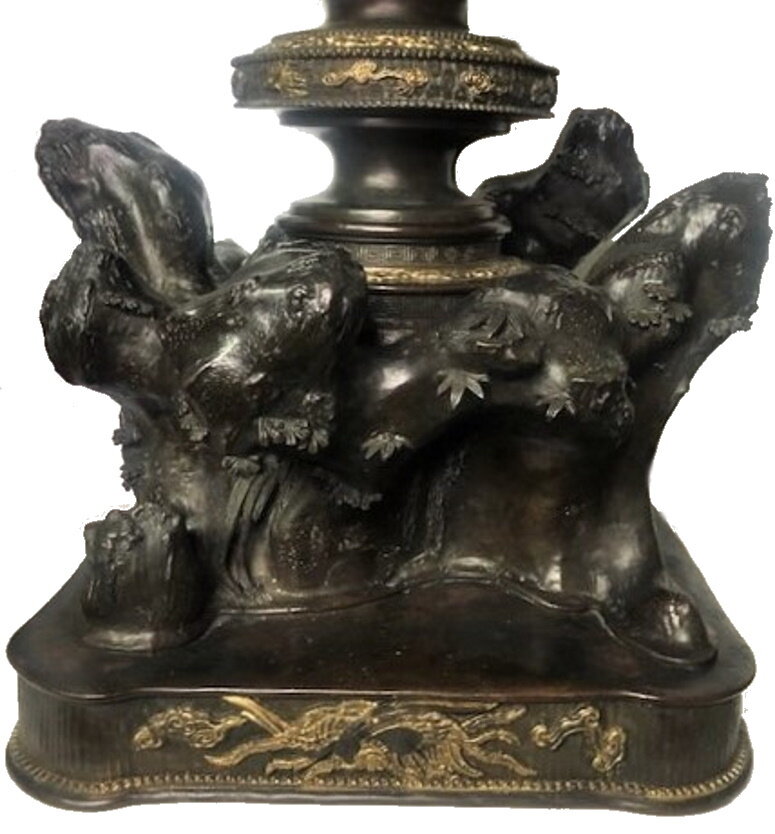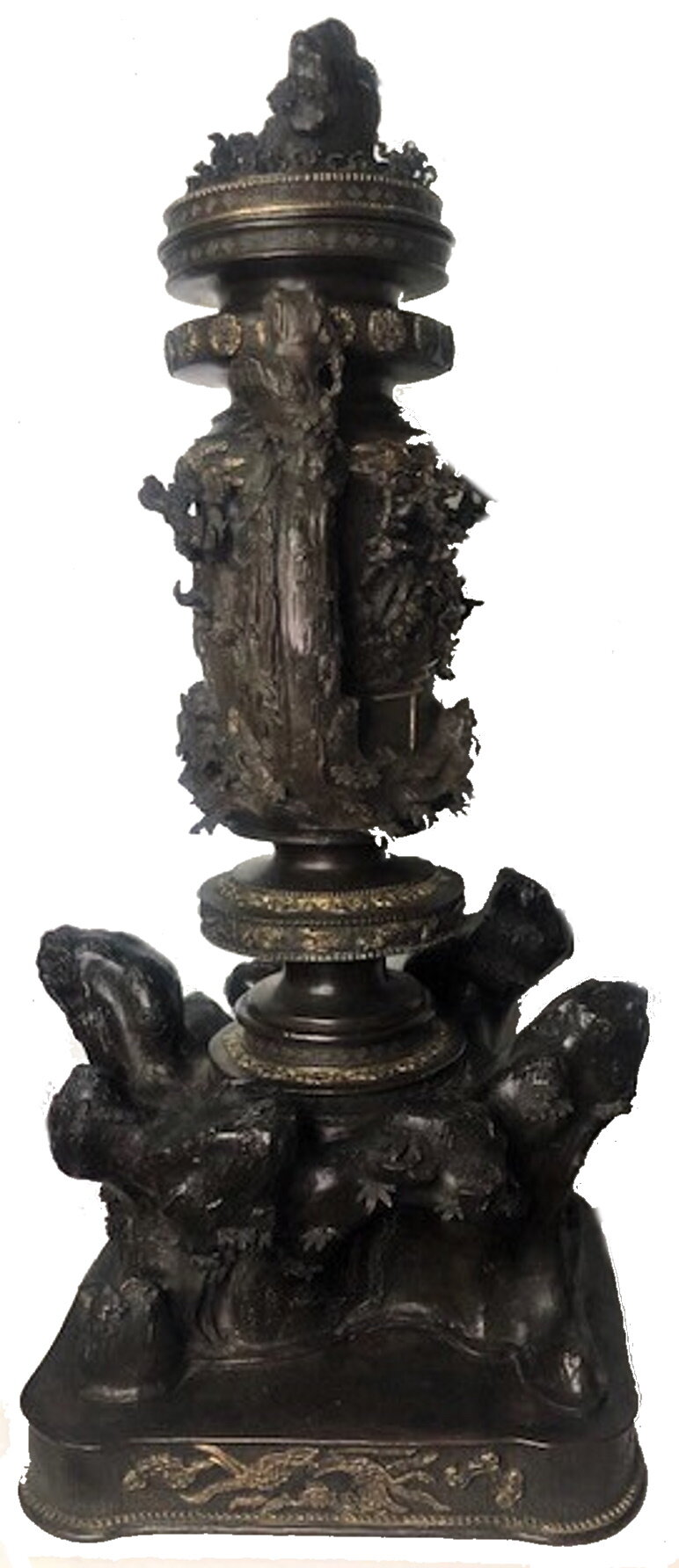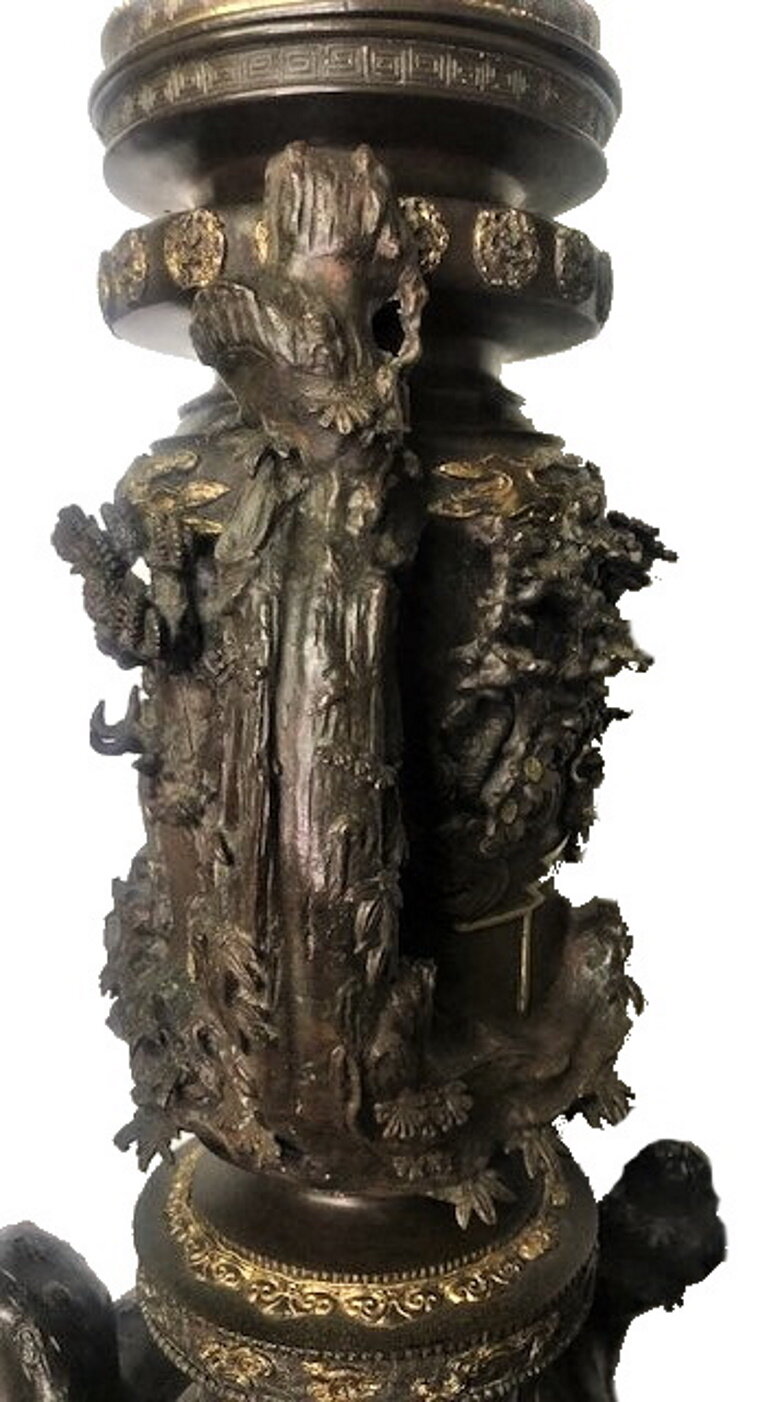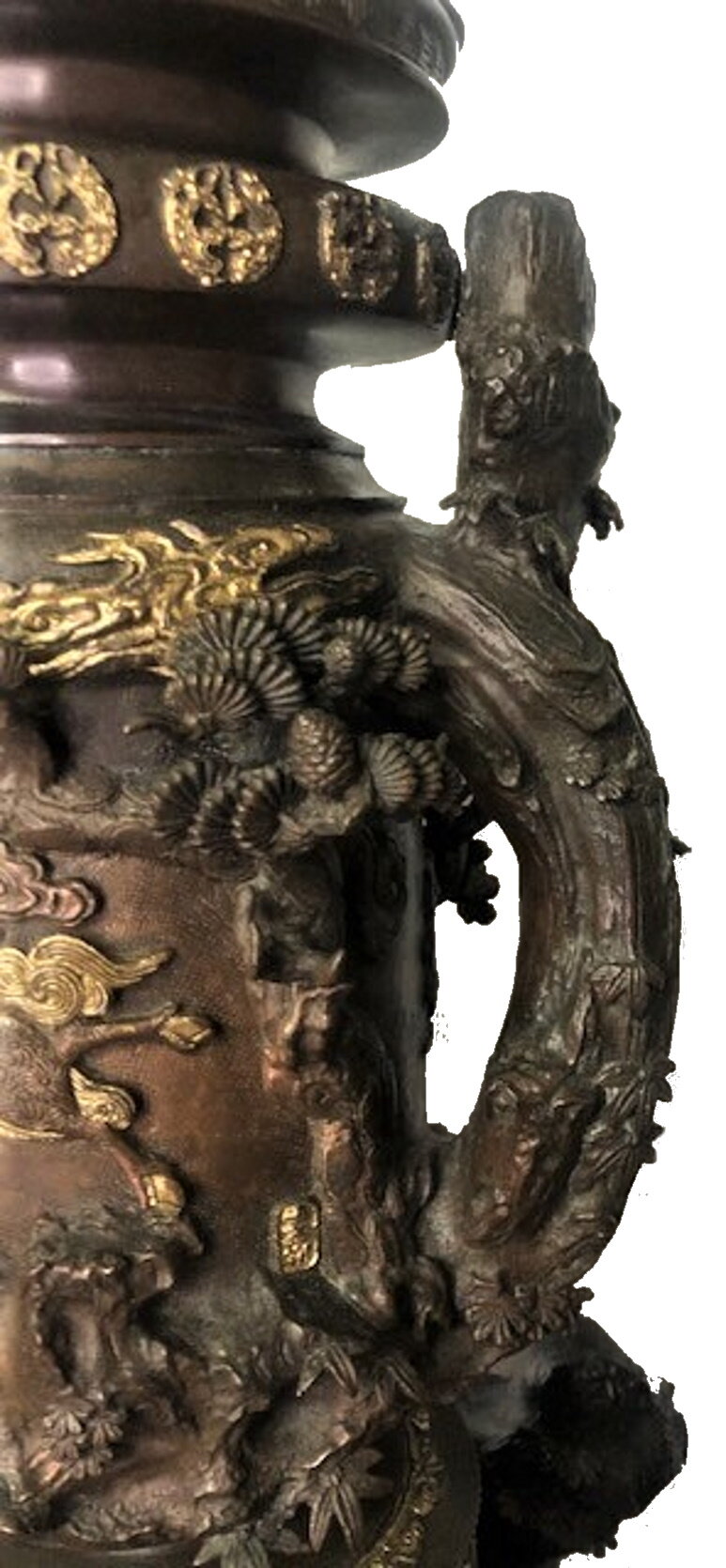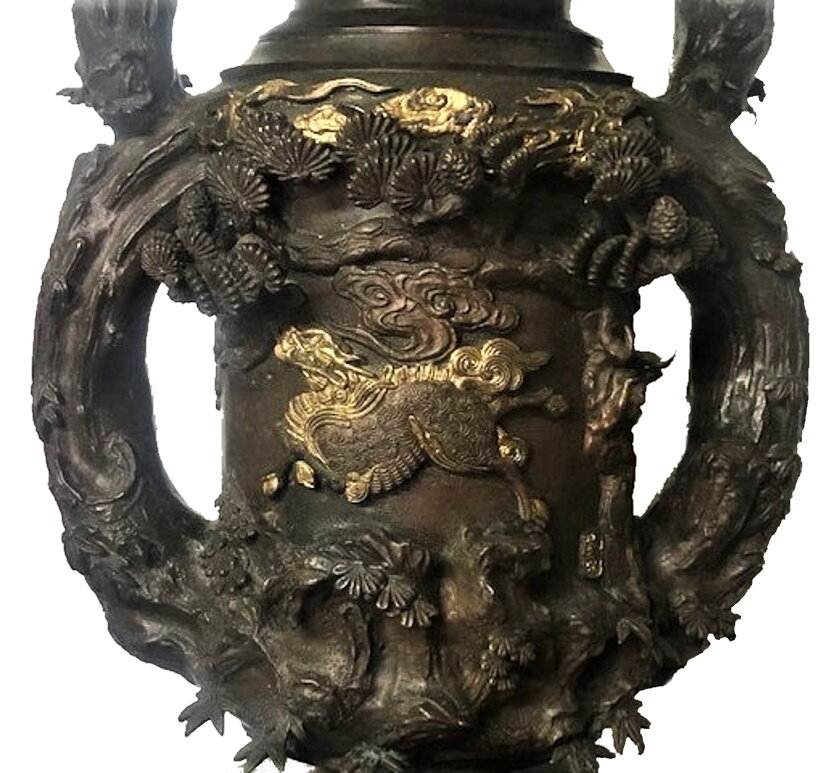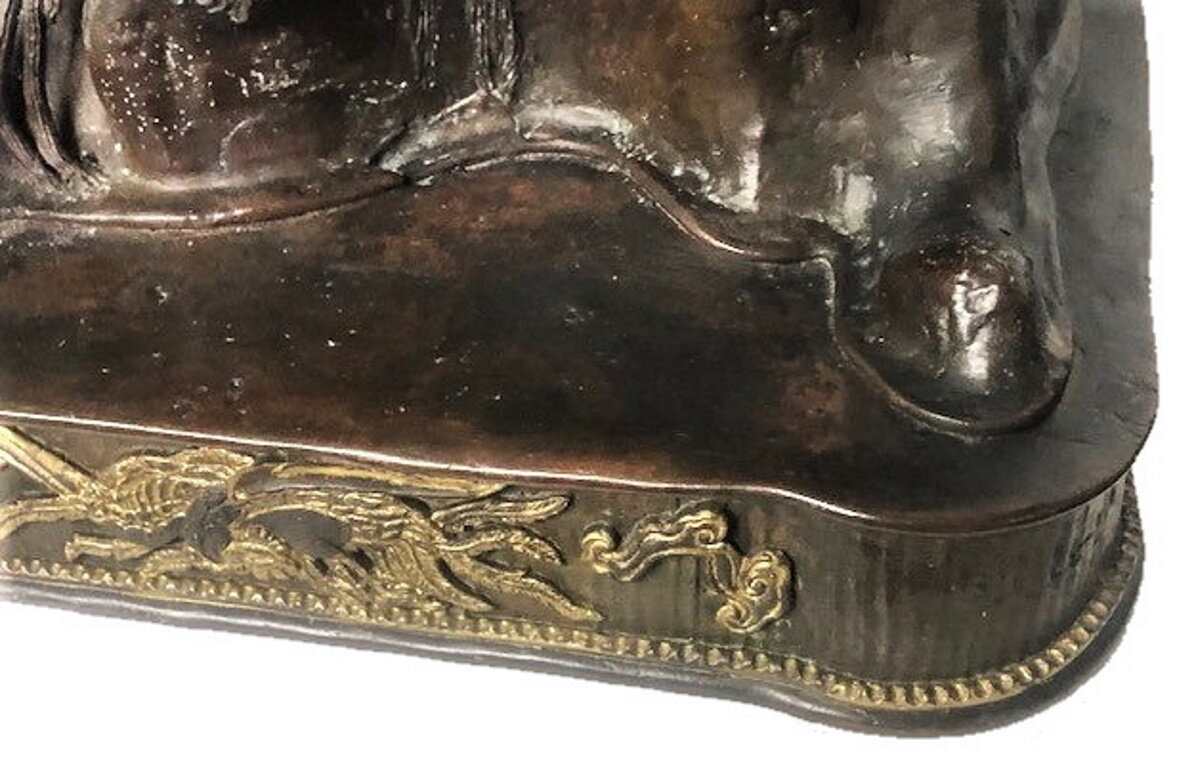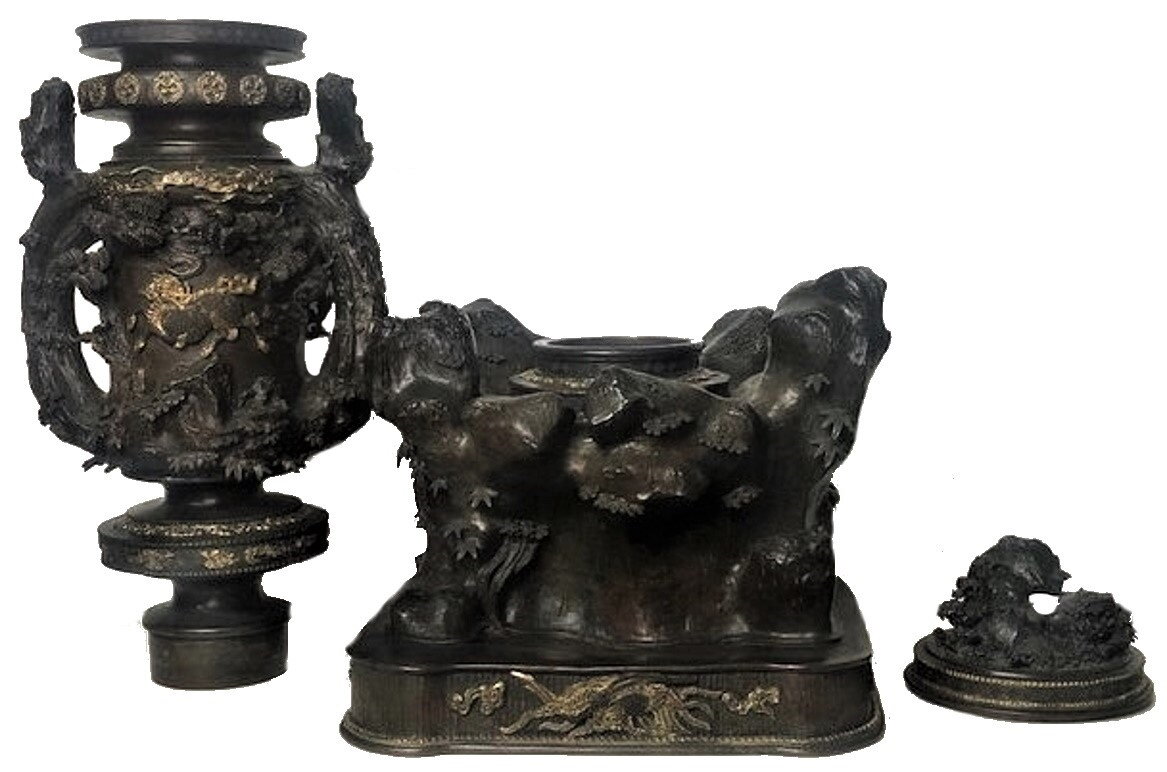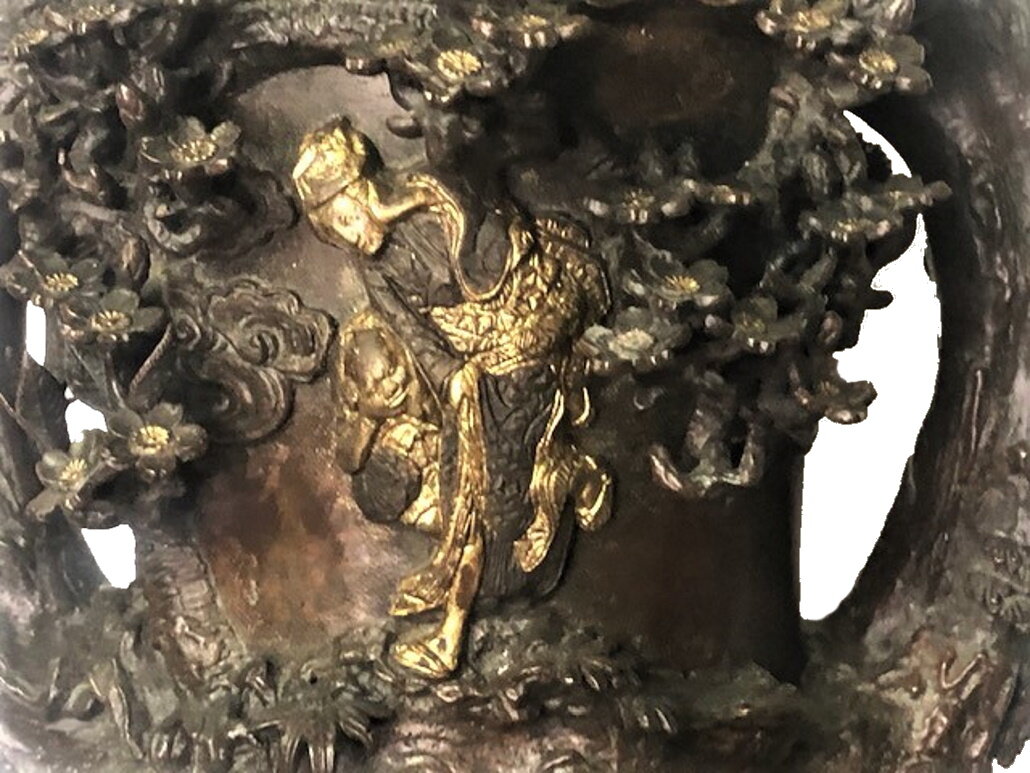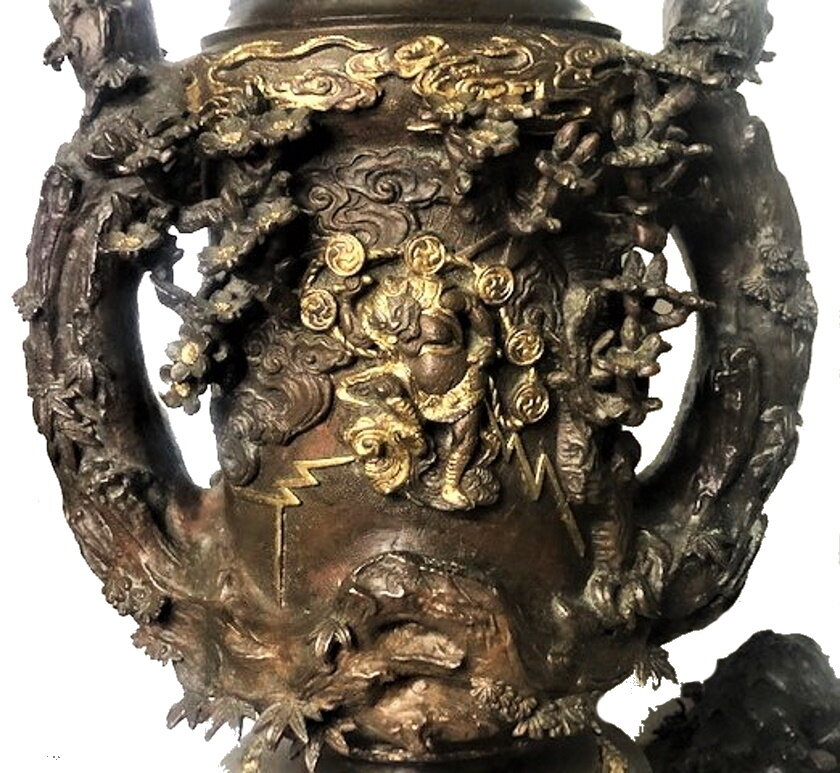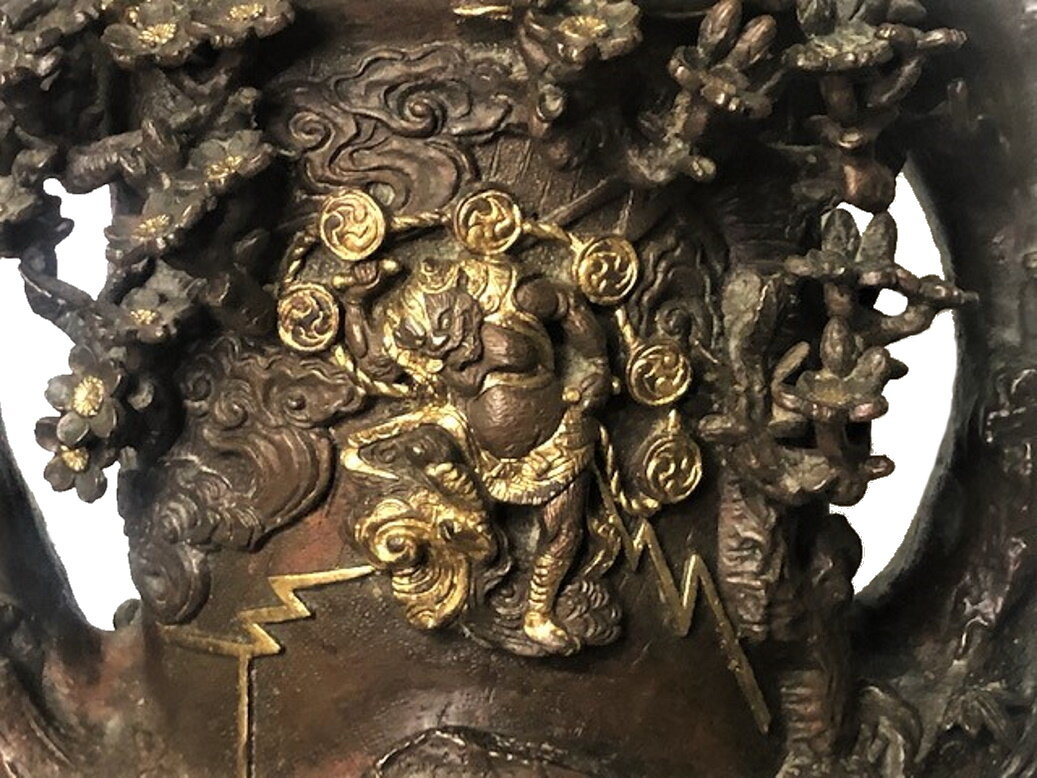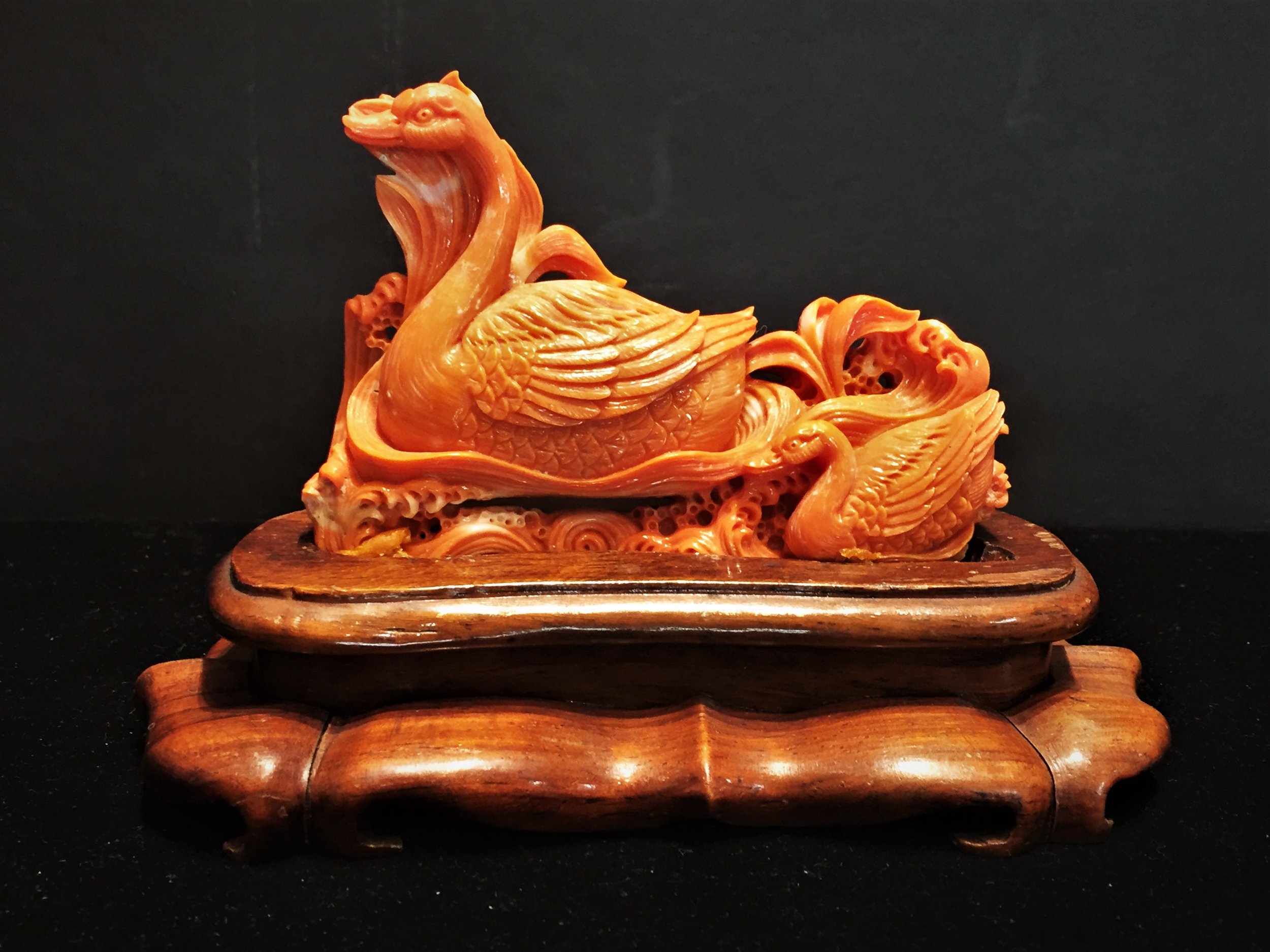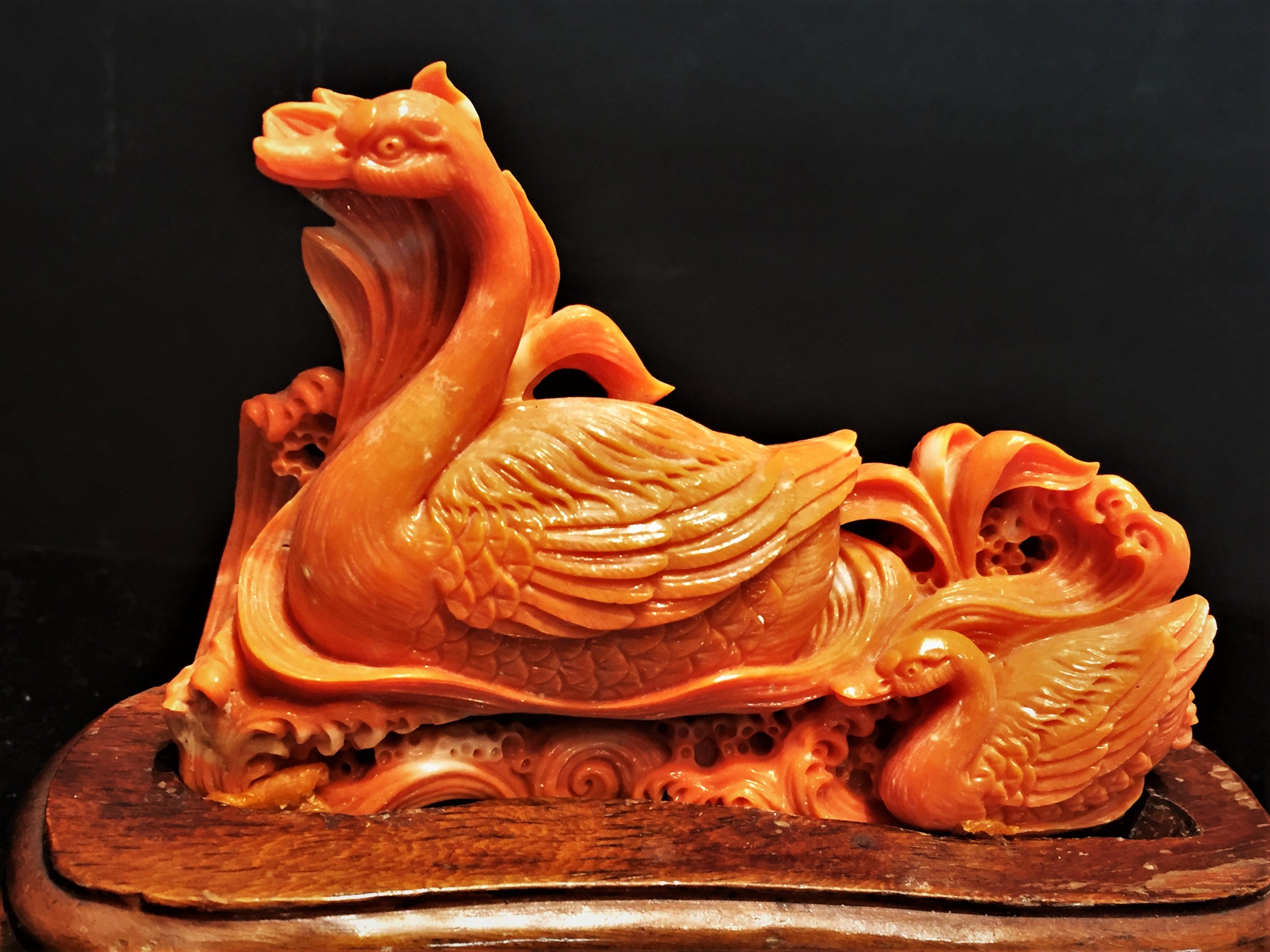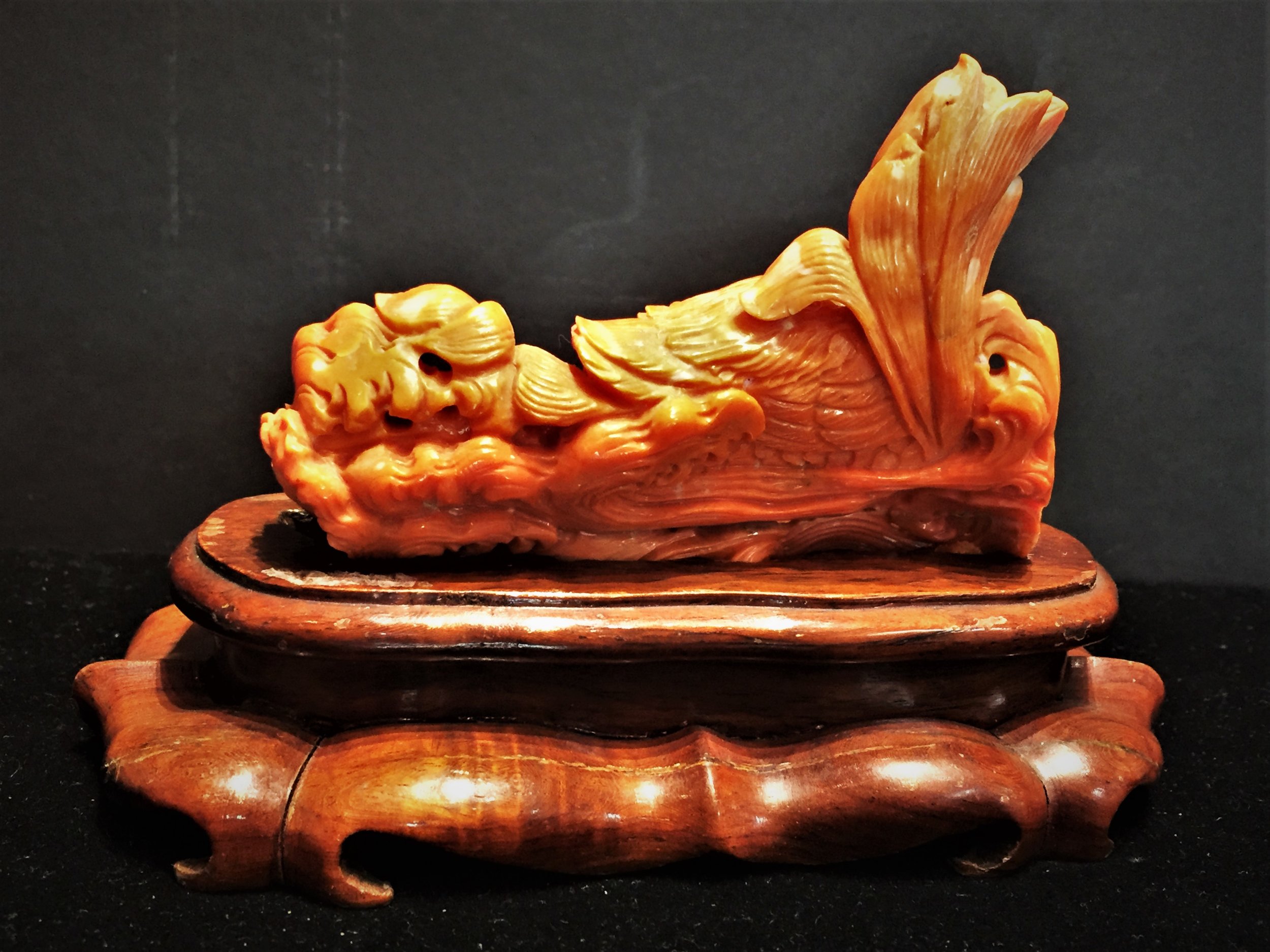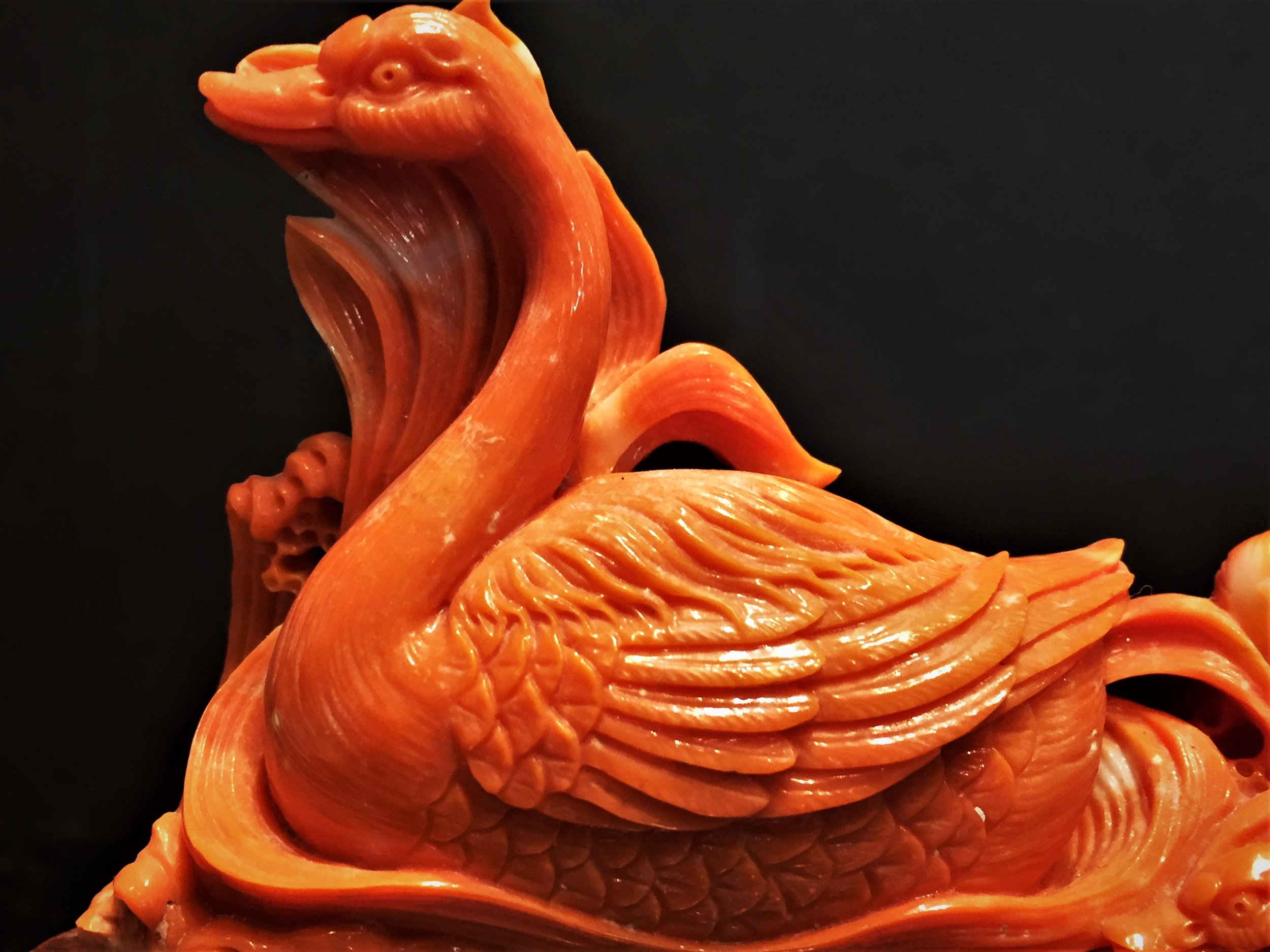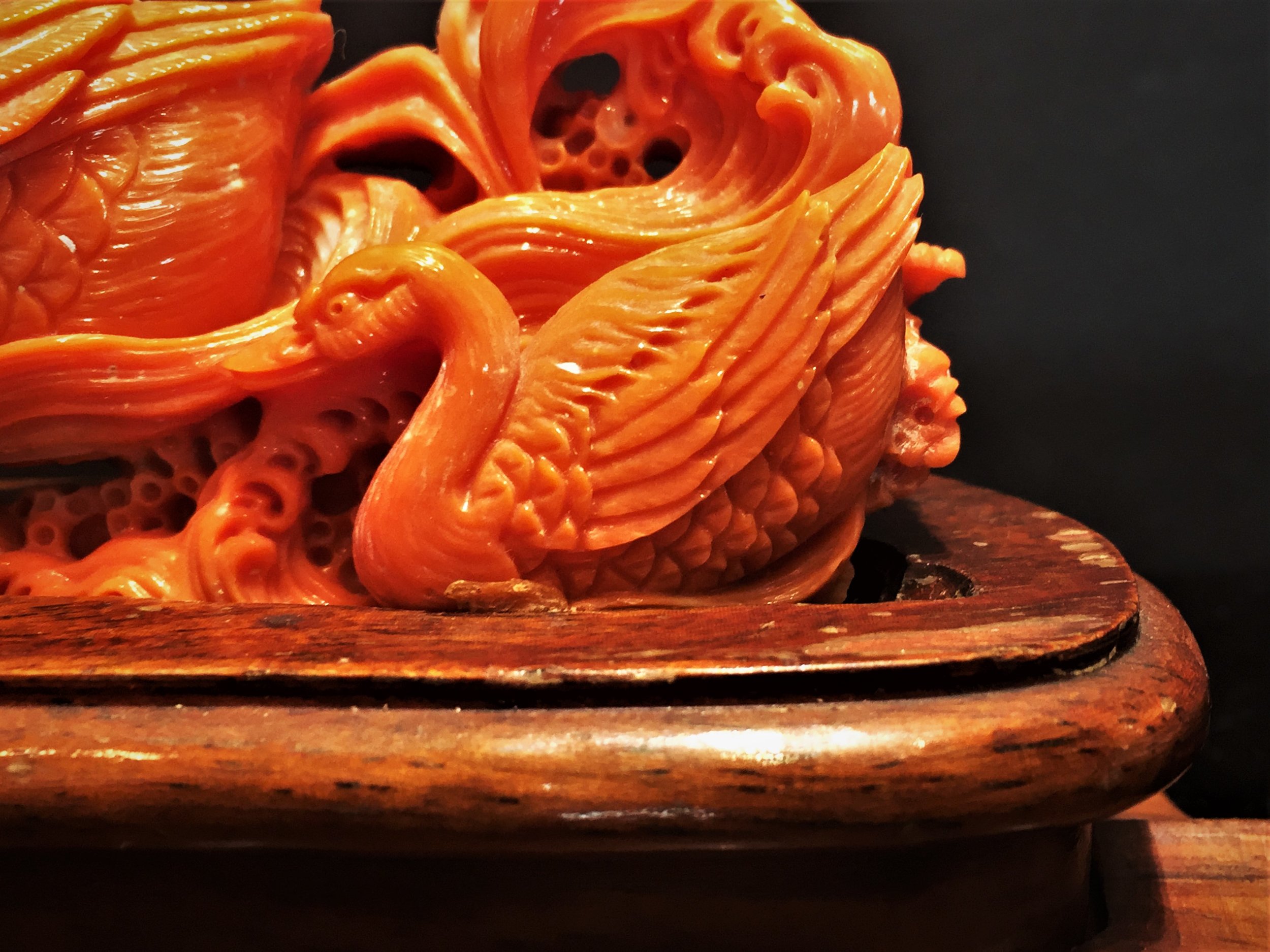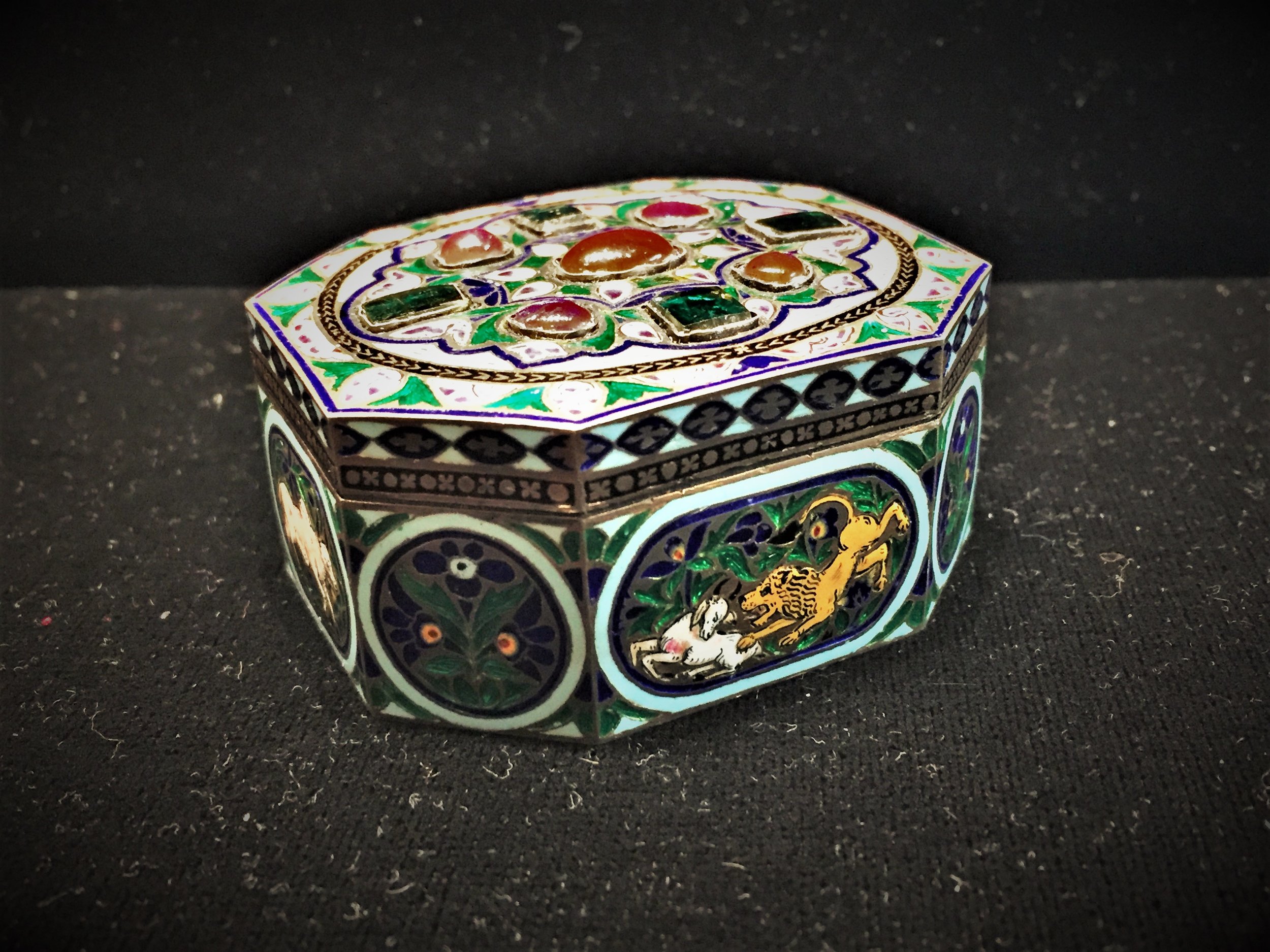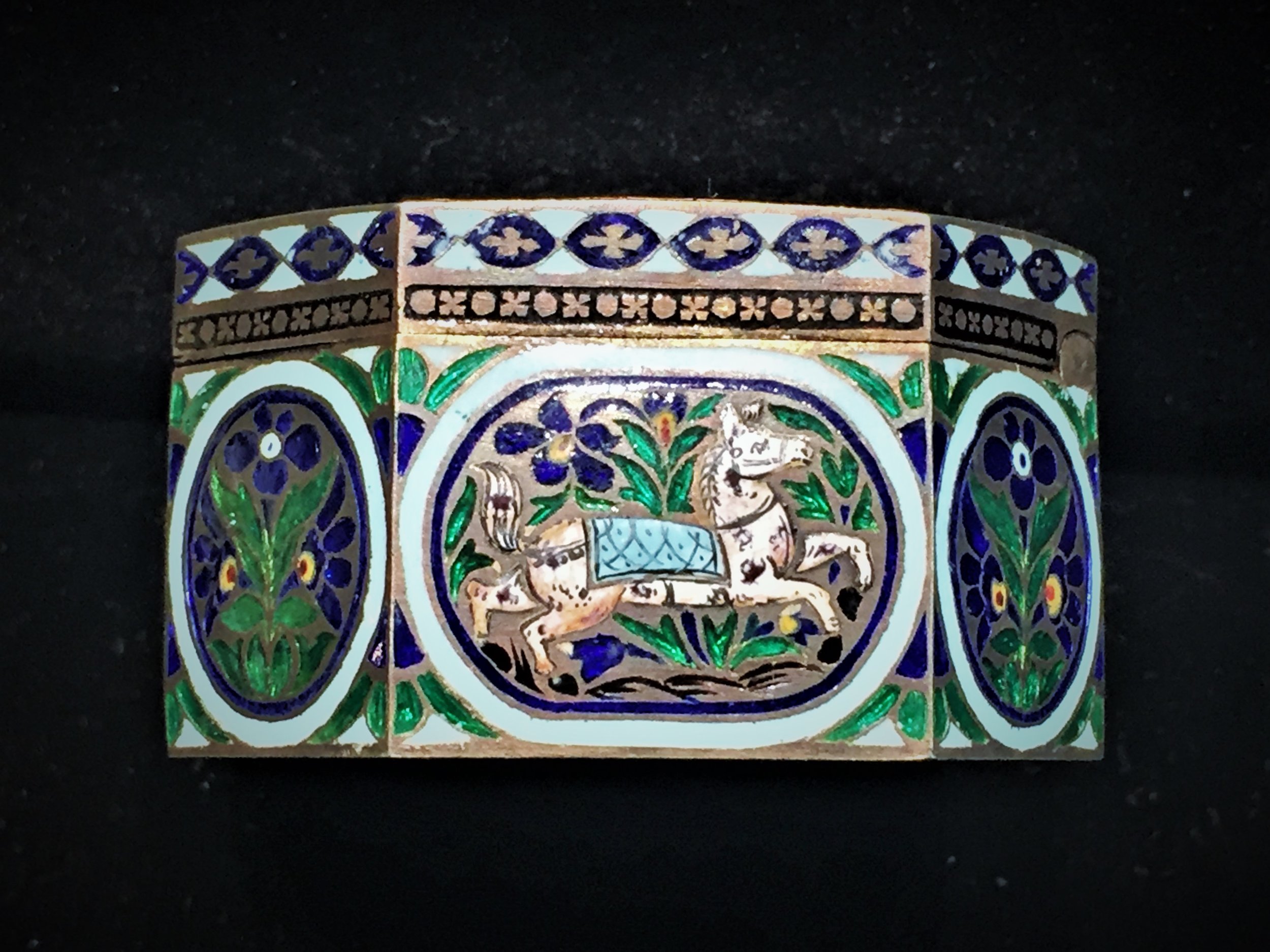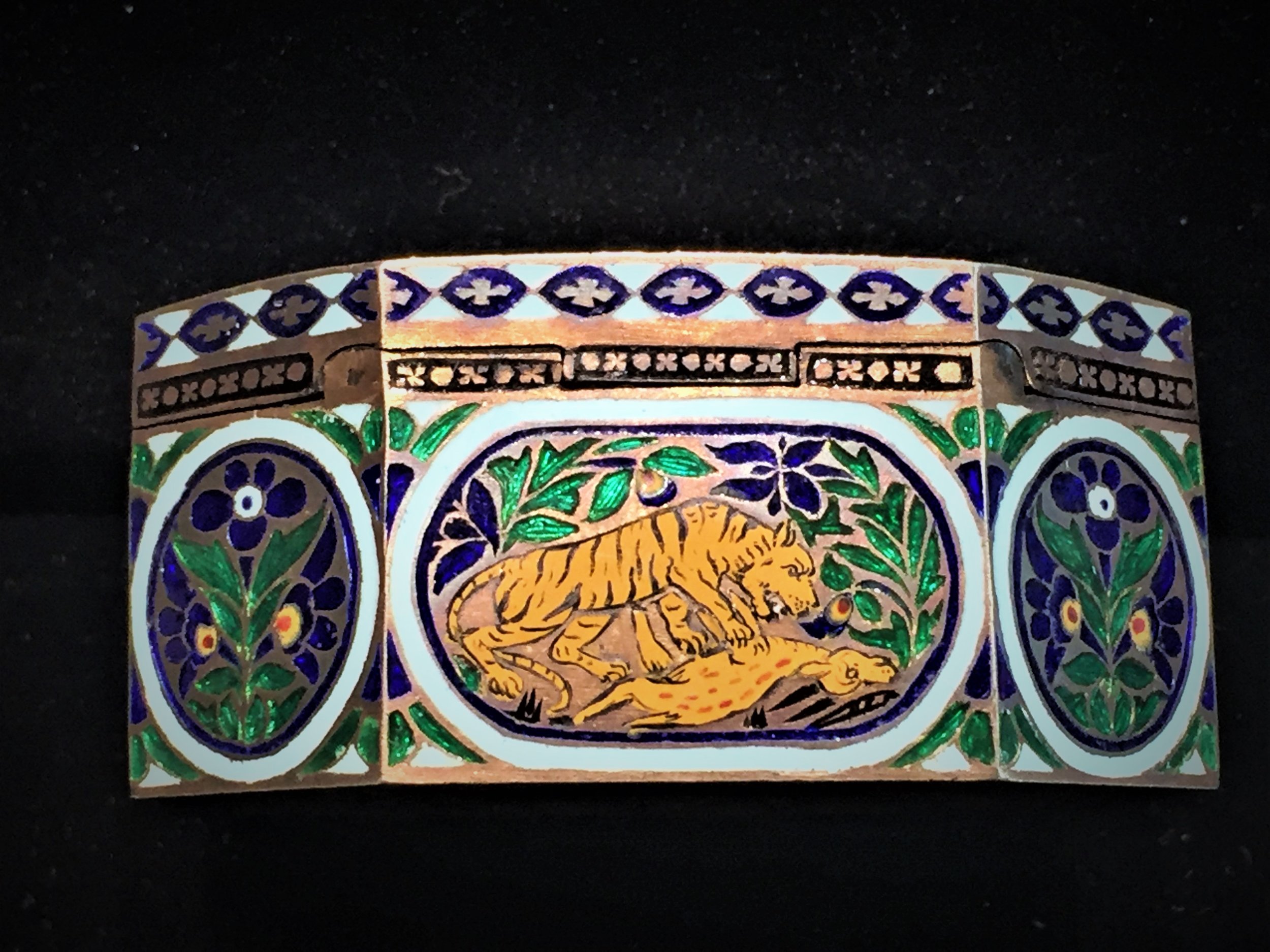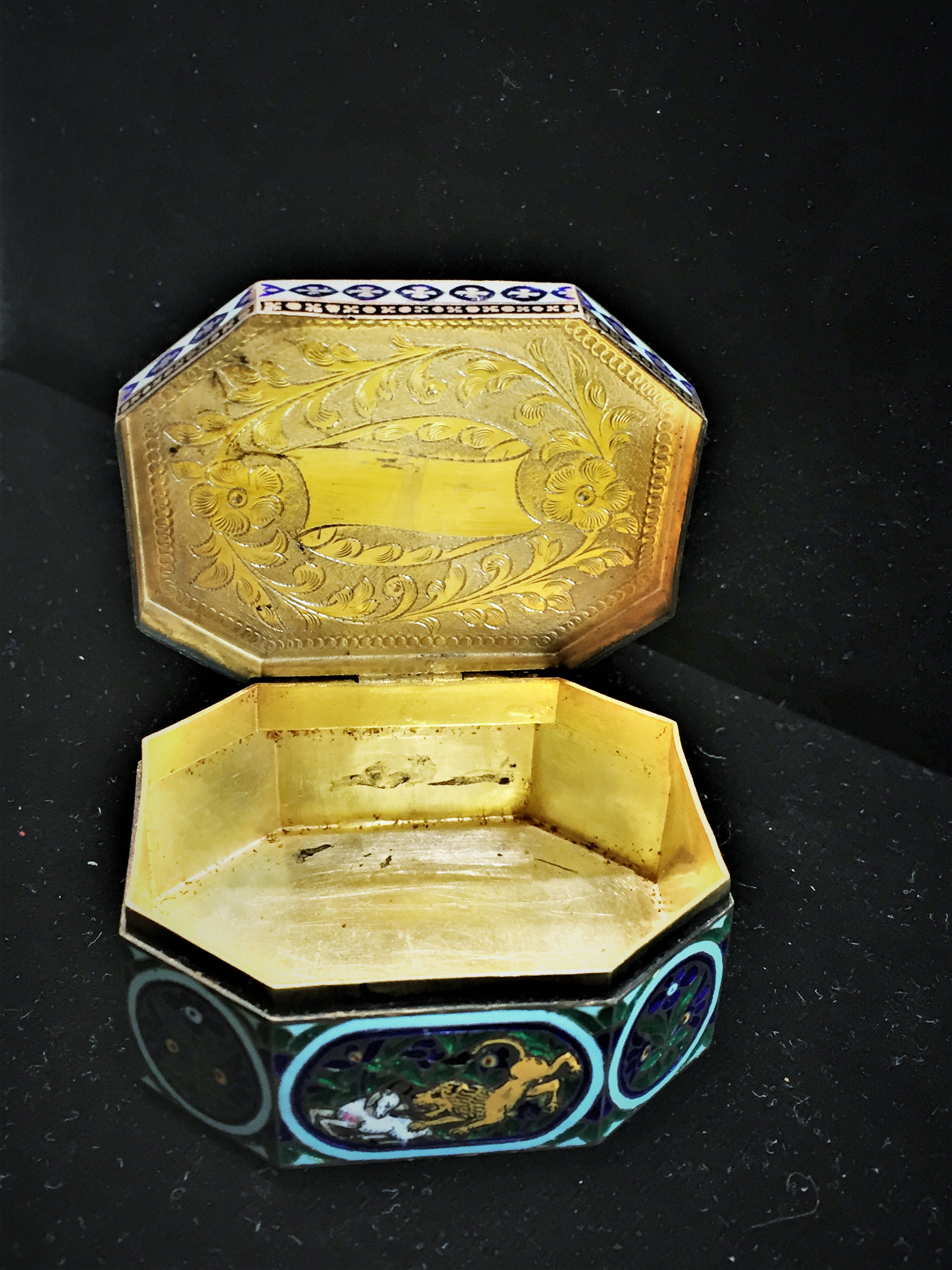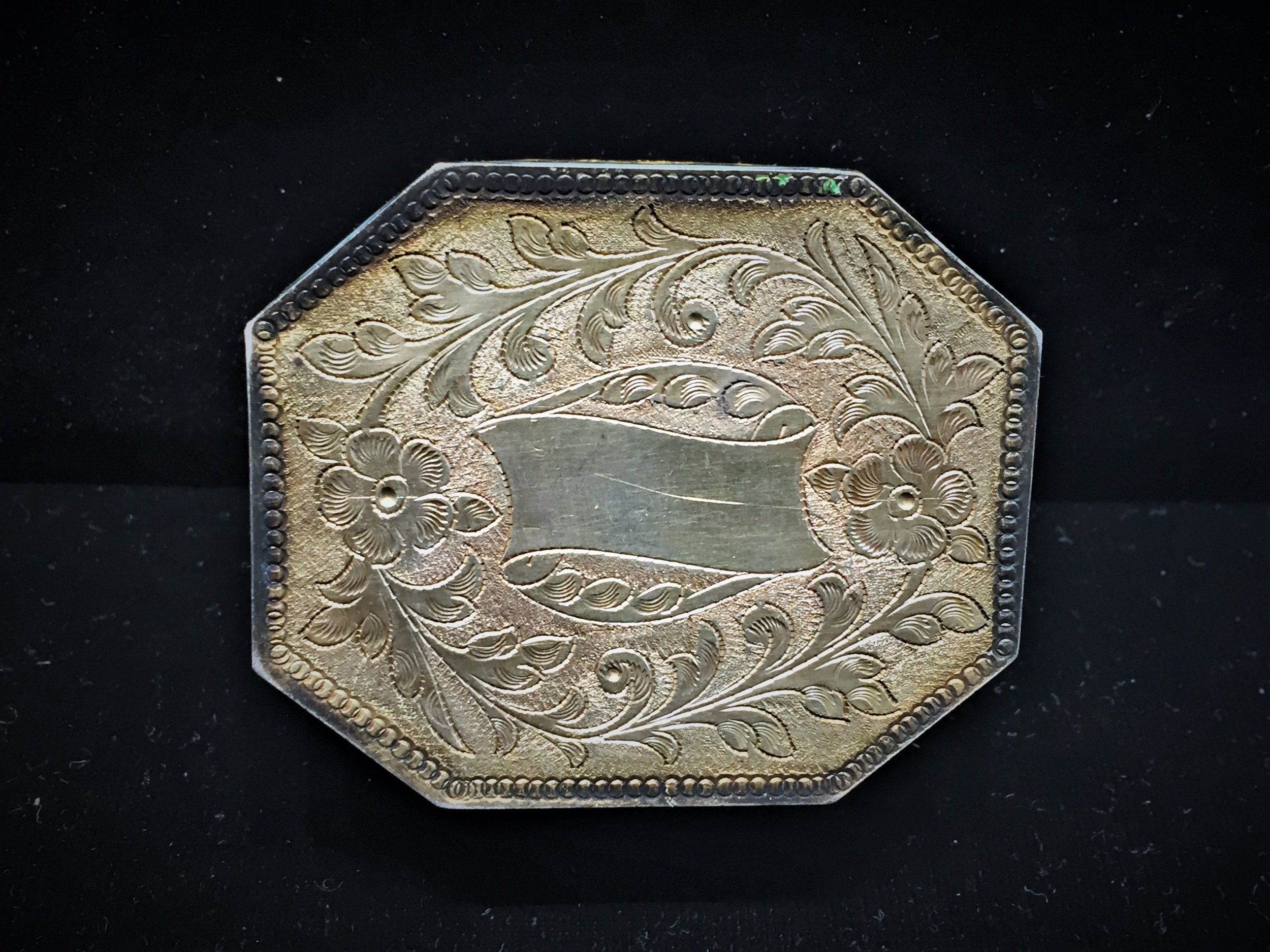Japanese Edo Period
Nabashima
Blue & White Porcelain Plate
Sea Shells & Family Crest
Japan, Ca. 1850
Period: Edo Period (1603–1868)
Date: Circa 1850
Markings: Signed on the back
Dimensions: Diameter: 7.5 inches; Depth: 1.5 inches
ABOUT
An exquisite example of Edo-period craftsmanship, this finely potted Nabashima porcelain plate dates to circa 1850 and showcases the refined aesthetic and technical mastery associated with the prestigious Nabeshima kilns. Rendered in underglaze cobalt blue on a pristine white ground, the design features a delicate arrangement of stylized seashells — symbols of good fortune and longevity in Japanese art — alongside a boldly painted family crest, emphasizing the plate’s likely aristocratic commission or courtly use.
Characteristic of Nabeshima ware, the composition is both elegant and balanced, with a subtle yet commanding presence. The reverse bears the signature of the maker and exhibits the typical footring style and underglaze blue decoration associated with authentic Nabeshima porcelain of the late Edo period.
A superb collector’s piece, this plate reflects the sophistication and symbolism of elite Japanese porcelain production in the waning years of the Shogunate era.
$1,950
Japanese Art Nouveau
Late Meiji period
Urn
Cast Bronze
Circa 1900
DIMENSIONS
Height: 24 in (60.96 cm) Diameter: 21 in (53.34 cm)
ABOUT
This Japanese Art Nouveau bronze urn from the late Meiji period embodies secessionist design with its voluptuous forms, likely intended as an architectural feature. Crafted by hand in Japan during the early 20th century, this substantial piece is made of heavy cast bronze, showcasing exquisite craftsmanship. It remains remarkably preserved in antique condition, displaying age-appropriate wear that enhances its desirable patina.
sold
Chinese Export
Laque Burgaute Frame
Inlaid Silver, Gold, Abalone & Carved Jade
Ca. 1880s
DIMENSIONS
Height: 12 in (30.48 cm) Width: 8.75 in (22.23 cm) Depth: 0.5 in (1.27 cm)
DETAILS
A few minor losses to the lacquer on the side border are present.
ABOUT FRAME
This exquisite Chinese export picture frame showcases the traditional artistry of laque burgaute, meticulously adorned with intricate inlays of sterling silver and lavish 24-karat gold elements. Its opulence is further enhanced by the iridescent beauty of abalone shells, harmoniously integrated into the design. At its focal point, a magnificent antique white jade stone graces the frame, adding a regal touch to this masterpiece of craftsmanship. Crafted in China during the 1880s, this piece exemplifies the rich cultural heritage and unparalleled skill of Chinese artisans from the late 19th century.
$4,200
ANtique
Ikebana Vase
Rootwood & Bamboo
Japan, XIX Century
DIMENSIONS
Height: 19.25vinches Width: 10.13 inches Depth: 9.5 inches
ABOUT
This absolutely unique ikebana vase consists of three parts, each of which is made exclusively from organic materials - wood, bark and perennial bamboo trunk. The main and largest of the three parts, as if hugging the bamboo vase itself, is made of bark tightly attached to a wooden base. Thus, when composing an ekibana, the vase itself becomes an integral organic part of the entire floral composition as a whole.
In ikebana, the Japanese art of flower arranging, blossoms, branches, leaves, and stems find new life as materials for art making. In contrast to the western habits of casually placing flowers in a vase, ikebana aims to bring out the inner qualities of flowers and other living materials and express emotion.
The origins of ikebana can be traced back to the introduction of Buddhism to Japan via the Silk Road between the 6th and 8th centuries. An early form of ikebana involved offering flowers to Buddha, signifying a deep spiritual connection with nature, maintaining the 3 basic principles of representing nature through heaven, earth, and man with 3 primary flowers.
Ikebana arrangements are not unlike sculpture. Considerations of color, line, form, and function guide the construction of a work. The resulting forms are varied and unexpected, and can range widely in terms of size and composition, from a piece made from a single flower to one that incorporates several different flowers, branches, and other natural objects.
Clearly, in this particular case, this ikebana vase inspires an ancient meditative practice; serving as a botanical shrine to nature.
$1,500
Art Deco
Ikebana Basket
Chromed Metal
Japan, ca. 1930s
DIMENSIONS Height: 4.5 inches Width: 12.5 inches Depth: 9.75 inches
ABOUT
Ikebana is the Japanese art of of beautifully arranging cut stems, leaves, and flowers in vases and other containers that evolved in Japan over seven centuries. To arrange the stems and flowers exactly as one wishes, a familiarity with many different ways of fastening and positioning them is necessary. In ikebana, blossoms, branches, leaves, and stems find new life as materials for art making. In contrast to the western habits of casually placing flowers in a vase, ikebana aims to bring out the inner qualities of flowers and other live materials and express emotion. The principles of ikebana are:
Silence – It is a time to observe and work with nature.
Minimalism – It is influenced by Buddhism and its ideal of minimalism.
Shape and Line – Ikebana emphasizes shape.
The Buddhist desire to preserve life lies at the root of much of ikebana practice, and has created most of the rules of flower arrangement, controlling also the shapes of the flower vases, formed as to help to prolong the life of the flowers. During the 15th century, society changed drastically, much as it did during the Renaissance period in Europe, and practicing ikebana began formally as a secular endeavor. In the beginning, it was an important activity of the nobility and arrangers were chiefly Buddhist priests and samurai.
While we might consider flowers to be inherently feminine, ikebana was for centuries a predominantly male tradition, although it was practiced by both sexes.
$4,800
Meiji Period
Serving Tray
Black & Gold Laquered Interior Depicting Perched Eagle
Carved Root Wood
Japan, ca. 1868-1912
DIMENSIONS
Height: 9.25 inches Width: 11.5 inches Depth: 10.5 inches
ABOUT MEIJI PERIOD
The Meiji Era was the 44-year period of Japan's history from 1868 to 1912 when the country was under the rule of the great Emperor Mutsuhito. Also called the Meiji Emperor, he was the first ruler of Japan to wield actual political power in centuries. It was during the Meiji period that Japanese art students first went to Europe to study Western painting, and developed a new style of painting based on these techniques, known as yoga (or ‘Western style’). Yoga painting involved oil paints, canvas and watercolours, all techniques which had been developed in the West. Meiji period, is an era of Japanese history that extended from October 23, 1868 to July 30, 1912.The Meiji era was the first half of the Empire of Japan, when the Japanese people moved from being an isolated feudal society at risk of colonization by Western powers to the new paradigm of a modern, industrialized nation state and emergent great power, influenced by Western scientific, technological, philosophical, political, legal, and aesthetic ideas. As a result of such wholesale adoption of radically different ideas, the changes to Japan were profound, and affected its social structure, internal politics, economy, military, and foreign relations. The period corresponded to the reign of Emperor Meiji. It was preceded by the Keiō era and was succeeded by the Taishō era, upon the accession of Emperor Taishō.
$1,400
Meiji Period
Japanese Art Nouveau
Kinkozan Workshop & Studio
Sculptural Satsuma Pottery Decorative Bowl
ca. 1900
DIMENSIONS Height: 2.5 inches Diameter: 12.25 inches
ABOUT THE OBJECT
This unique decorative bowl, most likely, was created at the Kinkōzan workshop. Kinkōzan pottery enterprise was active in the period from 1645 to 1927. Headed by Kinkōzan Sōbei, it exported heavily from 1875, especially to America; and was considered the largest overall producer of Satsuma export ware.
ABOUT MEIJI PERIOD
The Meiji period (明治時代, Meiji-jidai), also known as the Meiji Era, is a Japanese era which extended from September 8, 1868 through July 30, 1912.
ABOUT SATSUMA POTTERY
Satsuma ware (薩摩焼, Satsuma-yaki) is a type of Japanese pottery originally from Satsuma Province, southern Kyushu. Today, it can be divided into two distinct categories: the original plain dark clay early Satsuma (古薩摩, Ko-Satsuma) made in Satsuma from around 1600, and the elaborately decorated export Satsuma (京薩摩, Kyō-Satsuma) ivory-bodied pieces which began to be produced in the nineteenth century in various Japanese cities. By adapting their gilded polychromatic enamel overglaze designs to appeal to the tastes of western consumers, manufacturers of the latter made Satsuma ware one of the most recognized and profitable export products of the Meiji period.
The precise origins and early innovations of Satsuma ware are somewhat obscure; however, most scholars date its appearance to the late sixteenth or early seventeenth century. The Satsuma region was ripe for the development of kilns due to its access to local clay and proximity to the Korean peninsula. In 1597–1598, at the conclusion of Toyotomi Hideyoshi’s incursions into Korea, Korean potters were forcefully brought to Japan to kick-start Kyūshū's non-existent ceramic industry. These potters eventually mainly settled in Naeshirogawa and Tateno, which were to become the hub of the local pottery industry.
Satsuma ware dating up to the first years of the Genroku era (1688–1704) is often referred to as Early Satsuma or ko-satsuma. The oldest remaining examples of Satsuma are stoneware made from iron-rich dark clay covered in dark glaze. Prior to 1790, pieces were not ornately decorated, but rather humble articles of folk-ware intended for practical everyday use in largely rustic environments or the tea ceremony. Given that they were "largely destined for use in gloomy farmhouse kitchens", potters often relied on tactile techniques such as raised relief, stamp impressions and clay carving to give pieces interest.
The intense popularity of Satsuma ware outside Japan in the late nineteenth century resulted in an increase in production coupled with a decrease in quality. Collectors sought older, more refined pieces of what they erroneously referred to as early Satsuma. These were in fact simply better-quality pre-Meiji nineteenth-century pieces, works from other potteries such as Kyoto's Awata ware (粟田焼, Awata-yaki), or counterfeits.
From around 1800, brocade (錦手, nishikide) painted decoration began to flourish, including a palette of "delicate iron-red, a glossy blue, a bluish green, a soft purple black, and a yellow very sparingly used". A slightly later innovation added painted gilding to the brocade (金錦手, kin nishikide). The multi-coloured enamel overglaze and gold were painted on delicate, ivory-bodied pieces with a finely crackled transparent glaze. The designs—often light, simple floral patterns—were highly influenced by both Kyoto pottery and the Kano school of painting, resulting in an emphasis on negative space. Many believe this came from Satsuma potters visiting Kyoto in the late seventeenth century to learn overglaze painting techniques.
The first major presentation of Japanese arts and culture to the West was at Paris' Exposition Universelle in 1867, and Satsuma ware figured prominently among the items displayed. The region's governor, the daimyo, understood early the economic, prestige and political advantages of a trade relationship with the West. In order to maintain its connection with Satsuma, for example, Britain offered support to the Daimyō in the 1868 rebellion against the shogunate. The Paris Exposition showcased Satsuma's ceramics, lacquerware, wood, tea ceremony implements, bamboo wicker and textiles under Satsuma's regional banner—rather than Japan's—as a sign of the Daimyō's antipathy to the national shogunate.
Following the popularity of Satsuma ware at the 1867 exhibition and its mention in Audsley and Bowes’ Keramic Art of Japan in 1875, the two major workshops producing these pieces, those headed by Boku Seikan and Chin Jukan, were joined by a number of others across Japan. "Satsuma" ceased to be a geographical marker and began to convey an aesthetic. By 1873, etsuke (絵付け) workshops specializing in painting blank-glazed stoneware items from Satsuma had sprung up in Kobe and Yokohama. In places such as Kutani, Kyoto and Tokyo, workshops made their own blanks, eliminating any actual connection with Satsuma. From the early 1890s through the early 1920s there were more than twenty netsuke factories producing Satsuma ware, as well as a number of small, independent studios producing high-quality pieces.
Eager to tap into the burgeoning foreign market, producers adapted the nishikide Satsuma model. The resulting export style demonstrated an aesthetic thought to reflect foreign tastes. Items were covered with the millefleur-like 'flowerpacked' (花詰, hanazume) pattern or 'filled-in painting' (塗りつぶし, nuritsubushi) to the point of horror vacui. They were typically decorated with "'quaint' ... symbols such as pagodas, folding fans, or kimono-clad [females]". Pieces continued to feature floral and bird designs, but religious, mythological, landscape and genre scenes also increased. There was new interest in producing decorative pieces (okimono), such as figurines of beautiful women (bijin), animals, children and religious subjects. The palette darkened, and there was generous application of moriage (盛り上げ) raised gold.
The mid-1880s saw the beginning of an export slump for many Japanese goods, including Satsuma ware, linked in part to a depreciation of quality and novelty through mass production. By the 1890s, contemporary Satsuma ware had become generally denigrated by critics and collectors. It was negatively received at Chicago's Columbian Exposition of 1893, but remained a popular export commodity into the twentieth century, becoming "virtually synonymous with Japanese ceramics" throughout the Meiji period. Satsuma ware continued to be mass-produced through the modern period, though quality declined to the point where it eventually lost interest for consumers.
$1,600
ON HOLD
Chinese Art Deco
Enameled Bronze Inkwell
wth Bird and Flower Motif
ca. 1920
DIMENSIONS Height: 2.5 inches Width: 6.75 inches Depth: 3.5 inches
$1,100
Chinese Art Deco
Bird & Flower Motif
Cloisonné Enamel Trinket Box
ca. 1920
DIMENSIONS: Height: 1.75 inches Width: 6.75inches Depth: 3.75 inches
AUTHENTICITY WE GUARANTEE THE AUTHENTICITY OF ALL ITEMS TO BE AS REPRESENTED
Ashville Fine Arts Gallery specializes in a variety of fine art, antiques, jewelry, collectibles and rare finds. If you have not seen something that interests you or that you collect, please visit often and check our ever-expanding inventory. We make a best effort to provide a fair and descriptive condition report. Please examine the photos attentively, as they are an integral part of item descriptions.
$1,800
Ancient-Style
Hand-Carved Grey Agate
Double-Handled Lidded Vase
China, XX C.
Hand carved from a single piece of dark gray semi-translucent agate, this exquisite table vase strikes with a harmonious combination of unusually laconic shape, geometrically designed traditional Chinese handles, shared proportionally between the body of the vessel and the lid; and, most importantly, mellowness of color.
Dimensions:
Total height: 6.5 in. Vase height: 4.38 in. (11.13 cm) Lid height: 2.12 in. (5.38 cm) Length: 7.63 in. (19.39 cm) Width: 2.75 in. (6.99 cm)
sold
End of Meiji Period ~ Japanese Art Nouveau
Kyoto Fuzan ~ satsuma ware
Double-Handled Vase
ca. 1900
Dimensions: Height: 5.75 inches (14.37cm) Width: 7.25 inches (18.12cm) Depth: 5.75 inches (14.37cm)
This beautiful end of Meiji Period Japanese Kyoto Fuzan Satsuma Ware double-handled vase has a gold plated intricate infinite circular relief pattern design and two images of goddess on both sides of the vessel.
$2,600
Japanese Art Deco
Planter with Elephants
Patinated Bronze
ca. 1930’s
Original dark-brown patina.
Dimensions:
Height: 9.25 inches (23.12cm)
Width: 14.25 inches (35.6cm)
Opening diameter: 11.4 inches (28.12cm)
$7,500
Edo Period
A Pair of Japanese Patinated BRONZE & Gilt Lidded Vases
ca. 1920
Signed & Stamped
Dark-brown patinated bronze, gilding.
Dimensions: Height: 25.5 inches (63.75cm) Width: 12 inches (30cm) Depth: 10 inches (25cm)
This masterly created pair of two-handled lidded vases adorned from top to bottom and all around with depictions of nature in extremely fine and crisp relief casting – wild forest, mountains and cliffs, trees, exotic flowers and clouds. The frontal and reverse parts of the vases are decorated with depictions of deities in flowing robes, soaring in the clouds. The vases are detachable and each consists of three parts - a finely chiseled quadrangular plinth, the vessel itself; and a lid with a top crowned by a beautifully sculpted forest-covered mountain cliffs.
SOLD
Vintage Chinese
CALLIGRAPHY BRUSH POT
Lavender Jade
ca. 1950’s
Dimensions: Height: 5-2/3 inches Width: 6-1/4 inches Depth: 4-1/4 inches
This vintage Chinese calligraphy brush holder is made of a rare type of jade, called Lavender Jade; and rests on a fitted noble-wood hand-carved pedestal.
sold
Art Deco
Yellow Stone Vessel In Wood & Silk Presentation Box
Japan, ca. 1920’s
Dimensions of Vessel: Height: 6-1/2 inches Width: 1-3/4 inches Depth: 3-3/4 inches
Dimensions of Presentation Box: Height: 3-1/4 inches Width: 8-2/3inches Depth: 6-7/8 inches
This elegant vessel of a very unusual rectangular streamlined shape is hand-carved from a natural yellowish stone, fitted into a handcrafted noble wood gift box with the interior upholstered in dark green silk.
sold
Chinese Art Deco
Patinated Bronze Vase with Monkeys
ca. 1920’s
Dimensions: Height: 8-2/3 inches Max. Radius: 5-1/4 inches
This remarkable traditionally shaped bottle vase is made of patinated bronze and depicts a flock of monkeys with their cubs, picturesquely positioned around the circumference of the lower part of the vase. The flower-like top of the high and narrow neck serves as a protrusion held by three monkey paws, simultaneously serving as handles. This masterpiece of applied art stands out for its unusually vibrant combination of ancient Chinese traditions and Art Deco aesthetics.
sold
Chinese Ancient-Style Hand-Carved
Grey Agate Double-Handled Vase
XX Century
Dimensions: Height: 4-3/8 inches Width: 2-3/4 inches Depth: 7-5/8 inches
Hand carved from a single piece of dark gray semi-translucent agate, this exquisite table vase strikes with a harmonious combination of laconic unusual shape, including geometrically designed traditional Chinese handles, and mellowness of color.
$2,800
Rare
Chinese
Hand-Carved Natural Carnelian Large
Lidded Jar
XX Century
A unique, luxurious and impressive lidded jar, elaborately hand-carved of a single piece of natural, semi-opaque Carnelian nugget. Ranging in color from yellow-orange to rich, near reddish orange, to orangey brown, this elegantly proportioned and impressive jar could be an excellent exotic Oriental accent in the decor of a modern stylish room. The jar stands on an original fitted inlaid rosewood base.
DIMENSIONS:
Total height (with base): 16-7/16 inches Base height: 1-7/8 inches Jar height: 11-5/8 inches
Jar width: 10-3/4 inches Jar depth: 6-3/4 inches Cover height: 3-1/2 inches
Cover width: 4-15/16 inches Cover depth: 6-3/4 inches
sold
Rare!
Japanese Art Nouveau
Monumental Patinated Bronze Vase
Meiji Period
Circa 1900
Dimensions:
Diameter: 18.5 inches Height: 24.75 inches Handles span: 13.75 inches
Although unmarked, this rare and important, grand but at the same exquisite patinated bronze vase has just a very few little details, defying the shape of the handles, as well as the base, depicting an overturned lotus flower; clearly suggesting the organic motifs being artist’s inspiration. Purely Japanese in its overall aesthetics and the imaginary simplicity of its form, this amazing work of applied art by an unknown master certainly bears the influence of Europe, which began to manifest itself in the absolutely closed Japanese society at the turn of the 19th and 20th centuries.
$18.000
Antique Equestrian
Patinated Bronze Sculpture
A Horse in Full Harness
Tibet, XVII Century
Dimensions: Height: 3-9/16” Len h: 4-7/8” Width: 1-1/8”
This little antique Tibetan equestrian figurine is distinguished not only by the remarkably detailed sculpture of a horse in a complete harness, but also by the high quality of the bronze casting and its original dark-brown patina. Judging by the presence of openings in the head and in the saddle, in all likelihood, at one time it was a part of a larger sculptural composition.
$1,150
A Pair of Matching
Tibetan Guardian Leopards
Patinated Bronze Sculptures
Early XX Century
Dimensions:
Height: 15.25 Width: 4.75” Depth: 13.75”
An early XX Century reproduction of the traditional Tibetan habitat guarding creatures figures in the manner of XVI Century antique bronze sculptures.
SOLD
XVIII Century
Qing Period
Translucent Cobalt Blue
A Pair of Peking Glass Bottle Vases
1750s
Dimensions:
Height: 10” Diameter (max): 4-7/8” Diameter (min.): 1-7/8” Glass thickness: 7/16”
This striking pair of Peking glass vases have a straight cylindrical neck and globular body. The smoothly curved classical form creates a dramatic silhouette accentuated by the deep, translucent cobalt-blue color. Peking glass was an art form that became popular after 1696, when the Kangxi Emperor had a glass workshop built on the grounds of the imperial palace.
sold
Pair of Japanese Candelabras
Patinated Bronze
18th Century
Dimensions: Height: 18” Width: 15.5” Depth: 14”
This most unusual pair of original 18th Century Japanese patinated bronze candelabras, uniquely designed as branches of mountain flowers entangled by a dragon. Contemporary marble bases. Good condition consistent with age and use. We make our best effort to provide a fair and descriptive condition report. Please examine the photos attentively.
$9,000
Vintage Hand-Carved
Red Coral Sculpture of Swans
China, 20th Century
Dimensions:
Height: 4 inches Width: 6 inches Depth: 3 inches
Weight:
A vintage, beautifully and meticulously hand-carved solid red coral sculpture, depicting a swan mother and a swan-child peacefully gliding across the water among thickets.
China, the 20th century.
SOLD
Enameled & Gilt Silver
Snuffbox with Hunting SCENES Miniatures
India, 19th Century
Dimensions:
Height: 1 1/16 inches Width: 2 3/8 inches Depth: 2 inches
Weight: 3 ounces
This amazingly beautiful precious 19th century bauble from India is an octagonal silver casket, completely covered with hand-painted ornamental and miniature multicolored enamels and features a gilded interior. Fitting one’s hand very comfortably, it was intended, in all probability, to serve as a snuffbox.
The top hinged cover of the snuffbox is decorated with symmetric floral ornament and medallions. The lateral surface along the entire perimeter is filled with very thinly executed four miniatures with scenes of hunting and animals, alternating with four floral ornamental miniatures. The most interesting are, of course, miniatures with hunting, scenes which alternately depict a lion torturing a bleeding bull, a horse, a tiger bent over a deer and a hunted down buffalo.
As the silver hallmarks were not found, therefore, judging by the fineness of the jeweler, painter and engraver workmanship, one can assume with a high degree of certainty that this box was made on special order – probably, as a gift to a wealthy man.
Since the state of the snuffbox is almost perfect and two engraved vignettes (one on the inside of the lid for the owner's initials, and the other on the bottom of the box for the inscription) are unfilled, one can assume with even greater confidence that this gift was never given.
sold
Meiji Period
A Fine Japanese Hand-Painted, Enameled and Gilded Porcelain
Satsuma FLOWER Vase
~ 1000 Faces of Immortals, Samurai and Dragon ~
Ca. 1890
Dimensions:
Height: 8 3/4 inches Width: 7 1/2 inches Depth: 6 1/2 inches
The bottom of the vase has the distinct Satsuma porcelain Meiji period markings with the circle around the cross at the top.
Excellent antique condition, with minor age-appropriate wear. No cracks, chips, repair or restorations.
~
The originality of this sophisticated hand-painted and enameled & gilded vessel is in its absolutely unique form, certainly Japanese in its esthetics and proportions; but, which already carries in itself the unmistakable elements of the Art Nouveau era that just has began in Europe.The exterior of the vase is decorated with the classic Japanese plot of 1000 Faces of Immortals, Samurai and Dragon in the best tradition of Japanese Art, a blend of beauty and ferocity. The abundant use of gold color in the design sets a beautiful stage for the multi-color portrait depictions. The Meiji period (明治時代, Meiji-jidai), also known as the Meiji era, is a Japanese era which extended from September 8, 1868 through July 30, 1912.
$1,500




























































































































